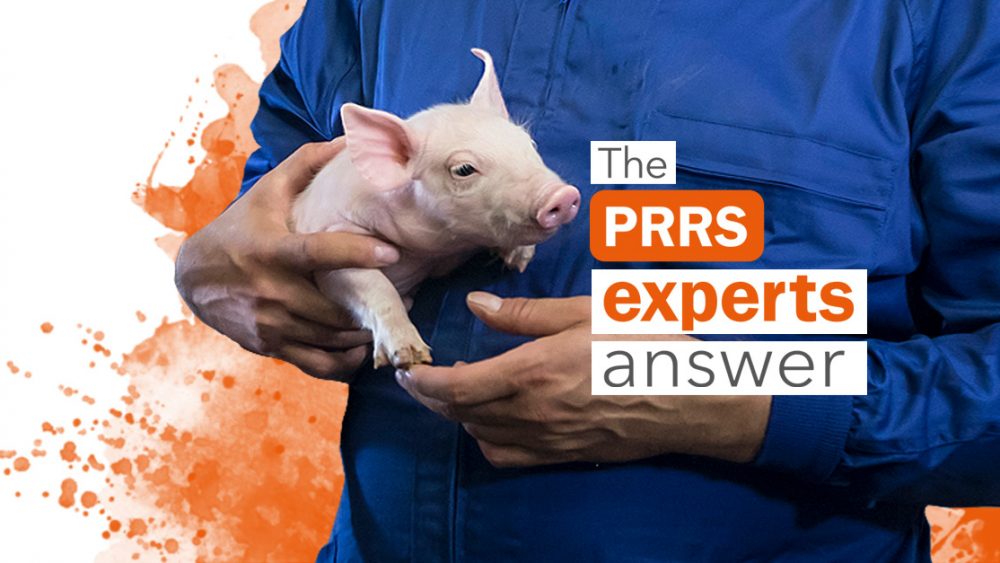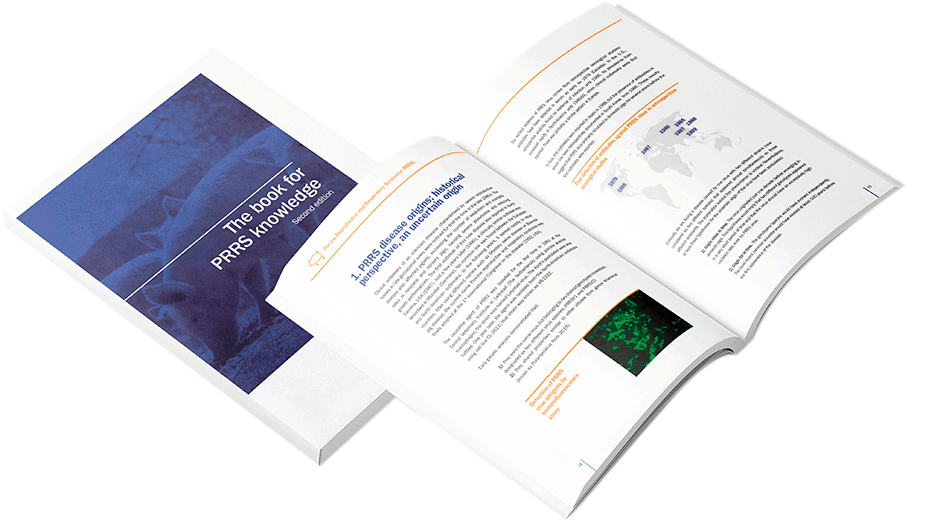Unfortunately, the PRRS intranasal immunisation route does not provide advantages, but disadvantages, with respect to the intramuscular route.
PRRS intranasal vaccination: Disadvantages
Long ago, based on the experiences with the vaccination against Aujeszky’s disease and the good results obtained with the intranasal vaccination when the maternal immunity interference was to be overcome, the use of the same route to protect the animals against the PRRS virus was pondered over.
Nevertheless, the studies carried out with regard to this have not provided good results, and in some studies the results obtained have been even worse.
The reason is that in the case of Aujeszky’s disease, the virus replicates, initially, in the respiratory tract epithelial cells, and from there it later reaches the nerves, where it will go on replicating.
The local immunity generated with the intranasal vaccination is able to block this first replication stage.
With PRRS the things are slightly different, as this virus will directly replicate in the target cells (the macrophages), so the immunity at a mucosal level will have no effect whatsoever, this making the intranasal vaccination route not the most recommendable one.
To reach a good immune response against the PRRS virus it is necessary to use live attenuated viruses that replicate and produce a complete immune response, and to that end the intramuscular route is required.
In the case of the immunisation against PRRS, the process is slow, and it is not until 4 weeks after the vaccination when an immune response capable of having some effect on the viral replication of the wild virus is reached.
PRRS early vaccination
Regarding the early vaccination of the piglets through the intramuscular route, we must bear in mind that if there is maternal immunity left there may be a certain degree of interference with the vaccination (Fablet C., et al. 2016), but that it will not be total.
Therefore, in some cases of early recirculation of the virus, the vaccine is applied intramuscularly to the suckling piglets.
In summary, the intranasal route does not provide any advantage, but disadvantages, versus the intramuscular route, so it would not be the best choice.
If you want to know more about how to overcome or reduce MDA interference or different routes of PRRS vaccines administration, visit chapter “Vaccinology” of this site.
You can ask your own question! Visit Pig333.com and submit your question to the experts.
¿Qué ventajas o inconvenientes podría tener la vacunación intranasal de de PRRS con vacunas vivas modificadas (MLV) el lechones de 2 semanas de edad?
Desafortunadamente la vía de inmunización intranasal no ofrece ventajas respecto de la intramuscular sino más bien desventajas.
Ya hace algún tiempo que, en base a las experiencias con la vacunación frente a la enfermedad de Aujeszky y los buenos resultados obtenidos con la vacunación intranasal cuando se quería superar el bloqueo de la inmunidad maternal, se especuló con el uso de la misma vía para proteger frente al virus PRRS.
Sin embargo los estudios que se han realizado al respecto no han ofrecido buenos resultados, en algunos trabajos los resultados obtenidos han sido incluso peores.
El motivo es que en el caso de la enfermedad de Aujeszky el virus replica en un primer momento en las células epiteliales del aparato respiratorio y de ahí posteriormente alcanza los nervios donde continuará su replicación.
La inmunidad local generada con la vacunación nasal es capaz de bloquear esta primera fase de replicación a nivel local.
Con el PRRS las cosas son ligeramente distintas, este virus replicará directamente en las células diana que son los macrófagos, de manera que la inmunidad de mucosas no tendrá ningún efecto, ello hace que la vía de protección intranasal no sea la más aconsejable.
Para conseguir una buena respuesta inmune frente al virus es necesario el uso de virus vivos atenuados que repliquen y generen una respuesta inmunitaria completa y para ello es necesario el uso de la vía intramuscular.
En el caso de la inmunización frente a PRRS el proceso es lento y no es hasta las 4 semanas post-vacunación que se consigue una respuesta inmune capaz de tener algún efecto sobre la replicación viral del virus salvaje.
Vacunación temprana de lechones frente a PRRS
En cuanto a vacunar tempranamente los lechones por vía intramuscular, hay que tener en cuenta que existiendo inmunidad maternal se puede producir una cierta interferencia con la vacunación (Fablet C., et al. 2016), pero no total, de ahí que en casos de recirculación temprana del virus se aplique la vacuna por vía intramuscular a lechones lactantes.
Resumiendo, la vía intranasal no ofrece ninguna ventaja frente a la intramuscular, más bien desventajas, por lo que no sería la mejor elección.
Si quieres saber más acerca de cómo superar o reducir la interferencia con los anticuerpos maternales o rutas alternativas para la administración de vacunas de PRRS, visita el capítulo “Vaccinology” de este sitio web.

Marcovetgrup S.L. – Spain




